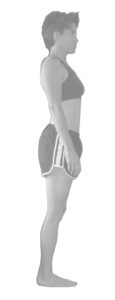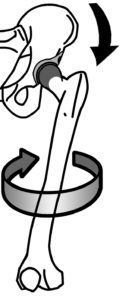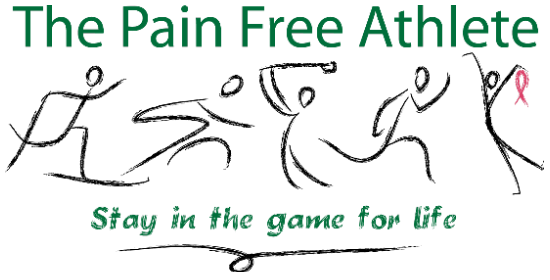I’ve heard a saying regarding pain in the body, “the victim screams while the criminal is silent.”
 When Tom Myers, internationally known fascia expert and author of Anatomy Trains, said this, he was referring to the interconnected relationships between the soft tissues in the body. What did he mean? The pain is not always, and actually not often, being generated where it hurts. Instead, the pain is responding to an imbalance somewhere else.
When Tom Myers, internationally known fascia expert and author of Anatomy Trains, said this, he was referring to the interconnected relationships between the soft tissues in the body. What did he mean? The pain is not always, and actually not often, being generated where it hurts. Instead, the pain is responding to an imbalance somewhere else.
For example, consider pain on the top of your shoulders. You know the spot, where you have those annoying, chronic knots that hurt like crazy when you apply pressure. Why do you have that tightness? Is there something wrong with those muscles? A problem in your shoulders? Your neck? Maybe . . . Or perhaps, the tightness signals a compensation in those muscles for something else going on in the body. The upper back/neck muscles are the victims screaming, while the real perpetrators—a hip disparity, lower back dysfunction or weakness in the core–are silent.
Modern medicine is symptom oriented, focused on relieving the pain often without looking deeper to find out WHY the pain is occurring. Medical professionals have become very good at treating painful symptoms. Unfortunately, these dedicated healers often overlook or lack the time needed to investigate the cause of the pain. This leads to an unending cycle of symptoms and invasive procedures.
Related Blog: The Most Important Question to Ask About Your Pain.
You’ve probably heard stories of people who have had multiple joints replaced or repeated back surgeries. Chronic pain and joint degeneration is caused by stress within the body. If the cause of this stress (e.g. muscles imbalances) is not addressed, the stress will just be redirected to other joints and soft tissues.
Misaligned Posture Caused My Chronic Symptoms
When I had my third knee surgery, on the same knee, I told the doctor I felt like there was something more to these injuries. The majority of my surgeries were to repair “wear and tear” issues that had developed slowly over time. I didn’t understand WHY I was having these problems while my competitors, who probably logged more bike miles than me, continued to pedal without pain.
 It wasn’t until starting posture therapy and seeing my position that I realized the knee wasn’t the problem. The cause was the position of my spine! I had too much forward rounding in my upper back and shoulders, which was balanced by an equally exaggerated curve in my lower back in the opposite direction.
It wasn’t until starting posture therapy and seeing my position that I realized the knee wasn’t the problem. The cause was the position of my spine! I had too much forward rounding in my upper back and shoulders, which was balanced by an equally exaggerated curve in my lower back in the opposite direction.
 This position increased the forward tilt of my pelvis. It also changed the orientation of my hips that internally rotated my knees. Not good! And, not long after my last knee surgery, I had hip surgery, again on the same side. The knee and hip were the victims being damaged to the point of needing repair. However, my curved back and shoulders didn’t make a sound.
This position increased the forward tilt of my pelvis. It also changed the orientation of my hips that internally rotated my knees. Not good! And, not long after my last knee surgery, I had hip surgery, again on the same side. The knee and hip were the victims being damaged to the point of needing repair. However, my curved back and shoulders didn’t make a sound.
After my final knee surgery, I had not taken action to find and correct the cause of my pain. So, the cycle continued to damage my hip. Only when I reduced the dramatic curves of my back, which created a positive chain reaction on the alignment of my hips and knees, did my frequent trips to the operating room end. Now I am hot on the trail of the criminals, which is silencing the victims.
Could posture be the cause of your chronic pain?
Let’s Talk! Contact me to schedule a free consultation.



